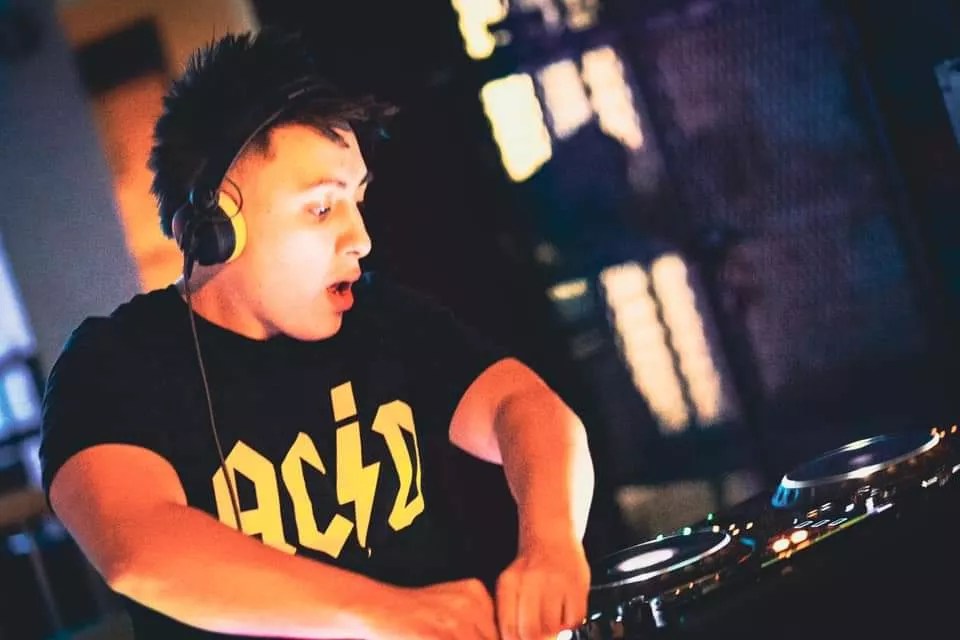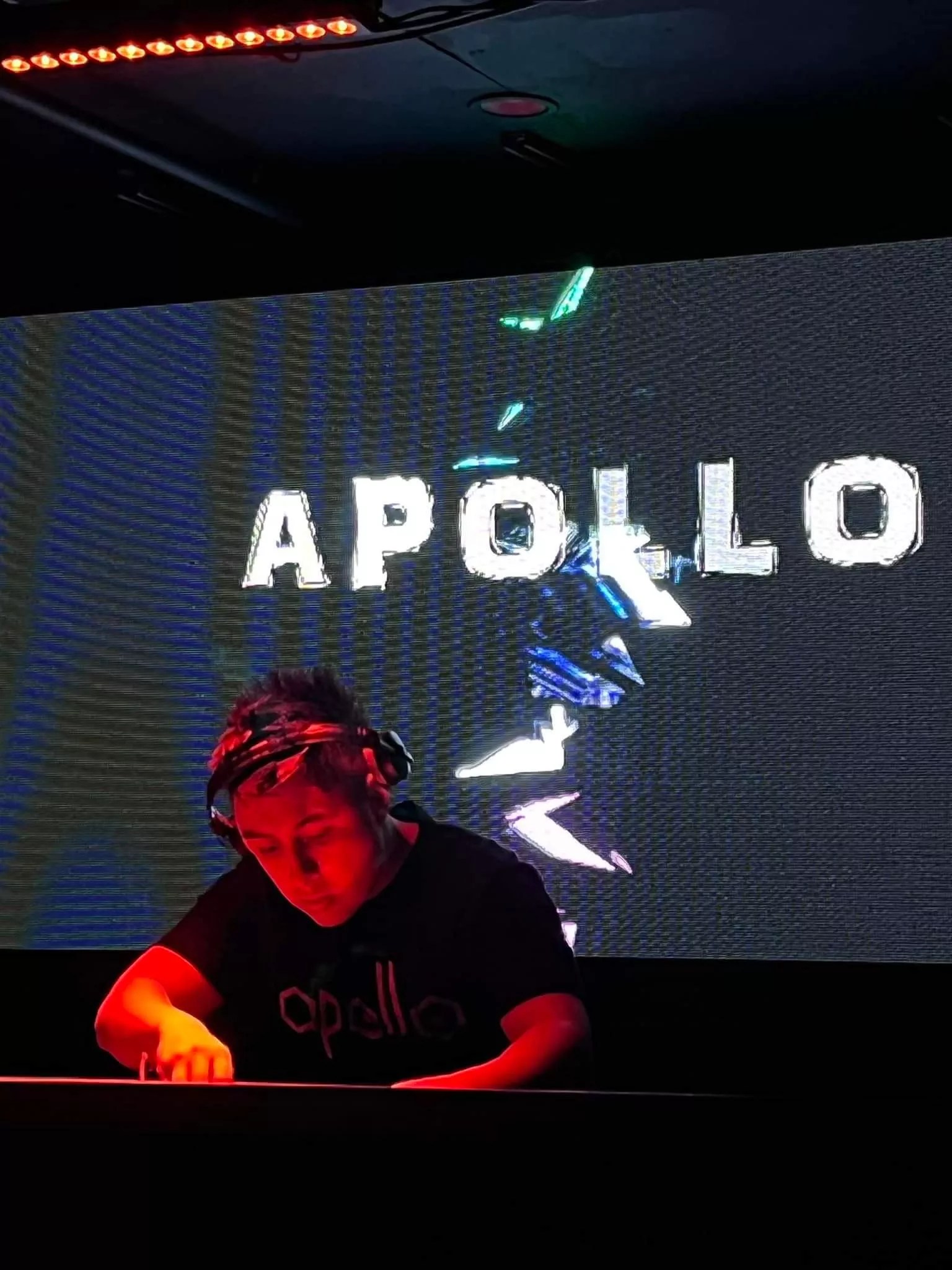
Stephen Cunningham

Audio By Carbonatix
A lot of people spend their free time defining what sounds fit inside a particular music genre, as well as the cultural ethos of what those genres represent. We call it “music hipsterdom.” Every genre now has its own distinct taxonomy, according to which its identity is rigorously defined by a non-governing body of internet hipsters and music journalists. And if you’ve ever met a hipster, you know that this debate can lead to friction.
When it comes to electronic music, the categorical obsession over subgenres has resulted in segmentation. One of the more frequently recurring wars is the conflict between trance and techno, and asks whether trance is denigrating the industrial spirit of techno.
Techno is a rhythmically focused genre of electronic music; the melody is stripped back, and its elements are looped and repeated. This circular nature is centered by a heavy kick drum that hits every other beat, and a hi-hat that plays in syncopation with the kick. Techno also often lacks a definable hook, and vocal elements are less common, though there are no hard and fast rules. Trance has elements akin to those of techno, with a comparable kick drum and hi-hat pattern played around similar beats per minute. But unlike techno, trance usually carries a predominant hook, a soaring melody and anthemic vocals. It’s also less industrial, from a sonic standpoint.
Over the past decade, trance producers have started incorporating techno elements into their songs, even going so far as to call it techno. And with the punk-rock attitude behind techno purists, the infiltration of flowery, anthemic music is sometimes seen as an affront.
Denver, make your New Year’s Resolution Count!
We’re $10,000 away from reaching our $50,000 year-end fundraising goal. Your support could be what pushes us over the top. If our work has kept you informed and connected this year, please consider making a contribution today.
“Techno has always had this pure, organic, dark, industrial and underground feeling that will always separate it from other genres. Anything that does not represent those five aspects, the techno scene will always try to separate itself from, even when it’s within its own genre,” says Denver DJ Josh Garcia, who goes by the moniker Apollo.
Garcia decided to take the controversial road, producing and deejaying in both genres. He accomplished this with his 2019 Techburst Records release “Nemesis”: While it has the dark, dismal kick of techno, it also possesses the soaring, glistening padded arpeggios of techno. However, his new EP, An Angel’s Sin, produced with Colorado-based record label Beyond the Music, is pure techno.
The EP has peaked at number seven on Beatport’s “Raw, Deep, Hypnotic” chart and at number thirteen on its “Peak Time / Driving” chart. For those unfamiliar, Beatport is the Denver-headquartered digital music store where many of the world’s most well-known DJs acquire their tracks and a major player in the global dance-music community.

Apollo’s new EP is pure techno.
Carlos Garcia
An Angel’s Sin features remixes by local techno producers Lorely Mur and Emyli Dahlia. The title track is a straightforward techno banger with a weighted industrial kick and searing hi-hats that clocks in at a moderate 130 beats per minute. Sputtering claves scatter around the stereo field, complementing an extended synth that envelops the track like a blanket on an icy day. Tranquilizing, dub-inspired synths occasionally come in, syncopated to the spoken-word vocalization.
Mur’s and Dahlia’s tracks take a similar route, but clock in with about 20 percent faster beats per minute and a more forward-facing kick drum that pulverizes the dance floor under the weight of its frequencies. Both also feature a predominant acid bass line, defined by Roland’s TB-303. So while Apollo’s tracks are more for either warming up or cooling down the dance floor, the remixes are meant for peak dance-floor frenzy.
Techno and trance played a big part in Garcia’s life in 2009, when he was a freshman at Santa Fe High School in New Mexico. At the time, techno was barely a glimmer in the United States – despite having been invented in the Midwest twenty years prior – and he could only find electronic music shows by deliberately seeking them out.
“During that time, the only way you could see any sort of electronic music live was to go to the local skate shop and buy tickets to the next secret underground party. You never knew who the DJs were or where the party was until you called the 1-800 number on the flier, which would direct you on how to get to the venue,” Garcia recalls. “The biggest genres in that scene were electro, breaks and dubstep, but there would always be at least one trance set at every rave. Of course, that was always the one I would look forward to.”
Around 2012, Garcia started seeing trance labels like A State of Trance and Anjunabeats taking the genre and marketing it to a wider audience. He also began to notice the first rifts between the techno and trance scenes, which started with trance producers integrating techno elements into their music. Stadium-filling trance emissary Eric Prydz, for example, heavily blurred the lines between the two genres with his alternating Pryda and Cirez D monikers.
The techno-trance hybrid was a success in the mainstream, and labels including JOOF, VII, Kearnage and Techburst Records started to open their doors to fledgling producers who would go on to define this amalgamation. In 2019, Garcia became one of those artists, signing the aforementioned collaboration with Z3phyr, “Nemesis,” on Techburst.
“This was a big release for us because of the love we had for both genres and how much Mark Sherry, the founder of Techburst Records, had influenced us as artists. Around this time, there seemed to be a large increase in popularity in techno in America,” Garcia says. “You started to see more names like Charlotte De Witte, Maceo Plex and Boris Brejcha headline the more popular American festivals. Although these types of artists did not bring the rawest or purest style of techno to the States, they did bring the demand and opened more opportunities for artists that did have the pure techno sound to establish their sounds in America.”
Garcia hopes that techno and trance fans will be able to unite, though he doesn’t see it happening anytime soon.
“I do see a point in time where techno and trance communities do come together more as a whole in the future. As the bass-music trends in America start to die down, I do think there will be a point in time where trance, techno and progressive will be the leading genre of music in this country,” he says. “Unfortunately, I do not feel like that time is now, because I have seen trance move more toward commercial sounds and trends in order to flourish in bass-heavy countries such as America.
“With a change in music comes a change in crowds, people who are more present for music as a product rather than an art,” he concludes, “and this is something the techno community will always try to separate themselves from.”
Apollo’s An Angel’s Sin is available for download at Beatport.